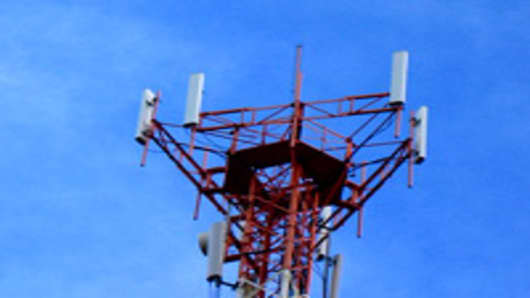The annual Consumer Electronics Show may be the belle of the Vegas Tech Ball, but CTIA Wireless 2010 was surely not the ugly stepsister. Rather, this year's show, Mobile Life, took place in the midst of what the organization called “unprecedented deployment and innovative new uses of wireless technology.”
According to the Consumer Electronics Association (CEA), smartphones are now the leading category in consumer electronics, likely to reach $17 billion in sales in the U.S. alone. “With more consumers seeking content anywhere,” says Steve Koenig, CEA director of industry analysis, “the demand for products facilitating these experiences will drive purchases going forward.”
This year's CTIA was a little slice of smartphone heaven, and featured Samsung's Galaxy S, Kyocera’s Zio M6000; and HTC’s EVO 4G, which the company claims offers a rich mobile Internet experience using a “fully integrated suite of services built on Google’s Android Platform and running on Clear/Sprint’s WiMax network.” That assumes, of course, you actually live in one of the 27 cities where WiMax is currently available.
According to Forrester Research, the number of mobile Internet users in the U.S. will double over the next five years, from 52 million today to some 106 million by 2015. As more handsets are sold, the demands on wireless networks increase exponentially.
Last July, for example, New Yorkers looking to buy an AppleiPhone online discovered it was “not available” in their area. The first explanation was, “New York is not ready for the iPhone,” according to journalist Laura Northrup, who called AT&T customer service to investigate. What it really came down to, though, was that AT&T's network couldn't handle the four-fold increase in traffic generated by a plethora of new iPhone users. Apparently, America's “largest 3G network,” wasn't large enough in the New York metropolitan area.
The good news: AT&T has since committed itself to meeting network demand, spending $19 billion to upgrade its network this year, roughly 10 percent more than 2009. The bad news: The 3G build out is happening just in time for the arrival of 4G, the newest, next-generation wireless network.
Why 4G?
Because “downloading data will be faster,” says Neil Strother, wireless analyst for ABI Research. Verizon and AT&T plan to build out 4G wireless networks using a technology called LTE (Long-Term Evolution). LTE is supposed to allow users to access content at higher speeds around the world—many of Europe’s carriers have committed to the same technology.
However, with Verizon and AT&T so heavily invested in their 3G networks, next-generation LTE is less a priority. In fact, Verizon says only about 300,000 people are likely to be covered by LTE by the end of this year. Additionally, Verizon isn’t going to have a 4G phone out until at least the middle of next year, according to CTO Anthony Melone. (Watch video of Melone's interview with Michelle Caruso-Cabrera here).
Sprint-Nextel's WiMax service used to be called Xohm. But go to Xohm.com today and you’re redirected to Clear.com, which is run by Sprint’s partner, Clearwire. (Sprint owns 56 percent of the company.) The Clear network claims to make mobile Internet surfing as fast as home and expects to cover 120 million people by the end of this year, and another 150 million down the road.
Richard Webb of Infonetics Research believes the WiMax market came out of the recession stronger, citing three consecutive quarters of growth for equipment makers. Motorola leads manufacturers, and is followed by Alvarion, which has 17 percent of worldwide revenue. The biggest growth in the industry comes from China-based Huawei, which has its foot in WiMax and LTE, and announced at this year's CTIA it had achieved LTE download speeds of up to 1.2Gb/second.
Networking company Juniper Networks estimates it could be 2014 or 2015 before 4G networks finally surpass traffic on 3G networks. Strother agrees. “If you want to know when 4G becomes “mainstream,” that’s another question, he says. “It’s several years away...like middle of this decade and thereafter.”
But that isn't stopping the build out.
So what companies are poised to benefit from 4th-generation wireless networks. Two years ago, it looked as though Qualcomm would be a big loser in the race to 4G. After all, the company cut its teeth with CDMA technology, which everyone, including Verizon, planned to kick to the curb. But over the last two years, as 4G came into focus, the company seems to have set itself up nicely. Qualcomm is now the leading patent holder for both LTE and WiMax, according to ABI Research, followed by Interdigital, Nokia and Huawei.
The Foreseeable Future
This year’s CTIA featured a spark of common sense when Clearwire CEO Bill Morrow commented during his keynote that the industry should focus on bringing LTE and WiMax together. His company’s network, he added, could be made to support both WiMax and LTE.
This isn’t the first time this has been suggested. Two years ago, Arun Sarin, Vodaphone CEO, said he believed WiMax could find a place in the LTE standard.
Regardless of the technology, as traffic continues to increase, 4G networks could face the same dilemma 3G networks face today. There’s only so much wireless spectrum available, and as more people buy new, 4G smartphones, they could become as jammed as today's 3G networks. “The thirst for more speed,” says ABI's Strother, “never seems to be satisfied.”
Fortunately, for consumers, the FCC's recently-released broadband plan has a provision to free up more spectrum to expand wireless networks over the next ten years.
Until then, it is possible 4G will bring the home Internet experience to mobile users. In fact, Strother equates the jump from 3g to 4G to going from dial-up to broadband. Most people, he says, are pretty satisfied with their home connections. “Perhaps 4G will have a similar story,” he says, “but you can't bet on it yet.”
- More Video: Broadband Plan's Winners and Losers
- Cramer's Top 21 Smartphone Stocks
- Slideshow: Tablet Wars: 12 iPad Rivals




